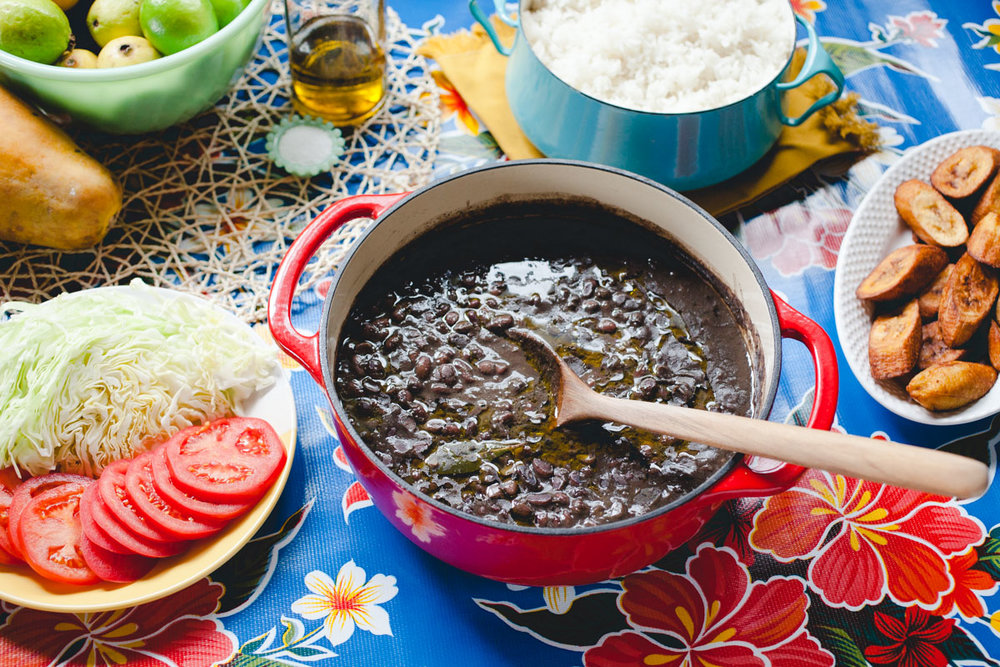Grandma Trigg used to make large dishes of what she called Lemon Chicken for us when my brothers and I were growing. Sometimes she’d make it in the oven, sometimes in her countertop electric skillet. Either way, it was packed full of caramelized onions, garlic powder, lemon juice, olive oil, and a heavy dose of Cavender’s Greek Seasoning. She always made it using bone-in chicken pieces, and it was never served without rice so you had something to sop up all of those flavor-packed pan drippings. It’s definitely near the top of my comfort food list.
These days, we’re eating less meat, but when we do we’re trying to buy from local farms. I’ve taken to purchasing whole chickens because it’s much more affordable, allowing us to be able to support these farms and their practices without breaking the budget. Whole chickens do take longer to cook than pieces, so to make it cook faster, I spatchcocked this one. (Spatchcock is just a fancy word for removing the backbone and flattening it. Serious Eats has a great tutorial if you haven’t done this before!) And, as much as I love a convenient spice like garlic powder, I love roasted garlic cloves and swapped out my grandmother’s go-to with lots of fresh cloves (about 5 heads to be exact!). This roasted chicken is loaded with flavor and will certainly satisfy any comfort food needs.
GARLIC-LEMON ROASTED CHICKEN
Makes 4 to 6 servings
Ingredients
1 (4-pound) whole chicken (let rest at room temperature
for 30 minutes for more even cooking)1½ teaspoon kosher salt
½ teaspoon ground black pepper
1 teaspoon lemon zest
4 tablespoons olive oil, divided
30 cloves garlic, peeled
2 heads garlic, tops cut off
1 small sweet onion cut into wedges
1 large lemon, half thinly sliced, half reserved
Method
Preheat oven to 425F.
Place chicken on a cutting board, breast side down. Find the backbone and remove, cutting on either side with kitchen shears. Flip bird over, slightly opening the cut side like a book. Press the heels of your palms in the center of the breasts until the bone snaps. Press until the chicken lies flat. Place chicken, breast side up, in a 13x9-inch baking pan, and tuck wing tips under breasts.
In a small bowl, stir together salt, lemon zest, and pepper. Rub chicken with 2 tablespoons of olive oil, and sprinkle with lemon-pepper mixture. Toss peeled garlic cloves and onion with remaining 2 tablespoon olive oil. Arrange garlic cloves and onion, heads of garlic, and lemon slices around chicken. Squeeze reserved lemon half over onions and garlic.
Bake for 15 minutes. Reduce oven temperature to 400F and continue cooking until skin is golden brown and a meat thermometer registers 165 when inserted in the thickest portion (between breast and thigh). Remove from oven. Let chicken rest for 10 minutes before cutting.
We enjoyed this sliced and served over couscous mixed with fresh herbs and topped with the roasted garlic and onions and a drizzle of pan drippings.
Save the Bones and Make Stock
The benefits of cooking a whole chicken go beyond enjoyment of the initial roast. The bones offer so much flavor and goodness that they absolutely shouldn’t be wasted! Pick all of the meat off the bones and combine them with a quartered onion, roasted garlic skins or a new head of garlic, celery or parsley if you have any, any remaining roasted lemon slices, a teaspoon of black peppercorns and a few bay eaves. Cover with water. Bring to a gentle simmer and let cook partially covered for 2 to 3 hours. Strain and discard solids. Stock can be frozen for several months or refrigerated and used within a week.
Don’t have time to make stock right away? Freeze the bones along with any vegetable scraps from cooking and make stock when you’re ready. Just respect the animal and don’t waste those bones.

















